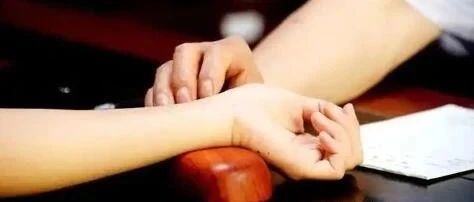
In Traditional Chinese Medicine (TCM) diagnostics, pulse diagnosis (mài zhěn) is an extremely important diagnostic method, and it is the core technique of palpation diagnosis (qiè zhěn).
It infers the health status and nature of diseases by feeling the changes in the pulse of the patient.
The magic of pulse diagnosis lies in its ability to provide key clues for disease diagnosis without the aid of modern medical instruments, through subtle perceptions of the pulse.

1
The Historical Origins of Pulse Diagnosis
The history of pulse diagnosis is long-standing, with records of it found as early as in the Huangdi Neijing (Yellow Emperor’s Inner Canon).
In the Suwen: Pulse Essentials (Sùwèn·Mài Yào Jīng Wēi Lùn), it states: “By feeling the pulse’s movement and stillness, observing clarity and brightness, examining the five colors, and observing the excesses and deficiencies of the five organs, as well as the strengths and weaknesses of the six bowels, one can determine the state of life and death.”
This indicates that in ancient times, TCM already regarded pulse diagnosis as one of the important bases for diagnosing diseases.
During the Han Dynasty, Zhang Zhongjing further elaborated on pulse diagnosis in the Shanghan Zabing Lun (Treatise on Cold Damage and Miscellaneous Diseases), using changes in the pulse to judge the transmission patterns and severity of cold damage diseases.
In the Jin Dynasty, Wang Shuhe systematically summarized pulse diagnosis in his work Pulse Classic (Mài Jīng), which detailed the types, characteristics, and clinical significance of pulse patterns, laying a solid foundation for the development of pulse diagnosis.
Since then, generations of physicians have continuously enriched and developed the theory of pulse diagnosis, making it an indispensable part of TCM diagnostics.
2
The Basic Principles of Pulse Diagnosis
The basic principle of pulse diagnosis is based on TCM’s theories of meridians (jīng luò) and qi and blood (qì xuè).
TCM believes that the meridian system is the channel for the circulation of qi and blood, while the pulse is the external manifestation of qi and blood flowing through the meridians.
When the circulation of qi and blood in the body is normal, the pulse appears gentle, strong, and rhythmic;
however, when the body is invaded by disease, the circulation of qi and blood becomes disordered, and the pulse will exhibit abnormal changes.
Therefore, by feeling the pulse, one can infer the state of qi and blood circulation, and thus determine the nature and severity of the disease.
For example, when a patient presents with a floating pulse (fú mài), it usually indicates that the pathogenic factor is on the surface, as the characteristics of a floating pulse are that it can be felt with light pressure and slightly diminishes with heavy pressure, similar to wood floating on water. This indicates that qi and blood are disturbed by external pathogens, with righteous qi resisting the evil externally, hence the pulse appears floating.
A sinking pulse (chén mài) often indicates an interior condition, as the characteristics of a sinking pulse are that it is not felt with light pressure and only appears with heavy pressure, similar to a stone sinking to the bottom of the water. This indicates that the pathogenic factor has penetrated deeply into the body, obstructing the circulation of qi and blood, leading to a reclusive pulse, hence the pulse appears sinking.
Through this perception and analysis of pulse characteristics, TCM can judge the attributes of diseases such as exterior/interior, cold/heat, and deficiency/excess, thus providing a basis for clinical treatment.
3
The Operational Methods of Pulse Diagnosis
The operational methods of pulse diagnosis mainly include selecting fingers, placing fingers, and moving fingers.
Selecting fingers refers to the physician typically using the index, middle, and ring fingers of either the left or right hand to feel the pulse. This is because these three fingers are more sensitive and can better perceive changes in the pulse.
Placing fingers involves aligning the tips of the three fingers and pressing them on the pulse at the cun (寸), guan (关), and chi (尺) positions. The cun position is located at the proximal end of the radial artery at the wrist, the guan position is at the midpoint of the wrist crease, and the chi position is at the distal end of the radial artery at the wrist.
Moving fingers refers to the physician using different pressures, such as lifting, pressing, and searching, to perceive changes in the pulse.
Lifting means applying light pressure on the pulse to sense its floating or sinking nature.
Pressing means applying heavier pressure on the pulse to sense its deficiency or excess.
Searching means using moderate pressure to push left and right on the pulse to sense characteristics such as size and slippery or rough texture.
In practice, the physician also needs to adjust according to the specific condition of the patient.
For example, for patients with a larger body size, due to thicker subcutaneous fat, the pulse may be relatively deep, requiring increased pressure.
Conversely, for patients with a smaller body size, the pulse may be relatively floating, requiring decreased pressure.
Additionally, the timing of pulse diagnosis is also very important; it is generally required to be performed while the patient is in a quiet state, with each pulse diagnosis lasting no less than three minutes to accurately perceive changes in the pulse.
In modern medical environments, pulse diagnosis still holds irreplaceable value, providing patients with a more comprehensive health assessment, personalized treatment plans, and psychological support.
As TCM continues to develop and improve, this ancient and magical diagnostic technique will continue to contribute to human health.
请在微信客户端打开

